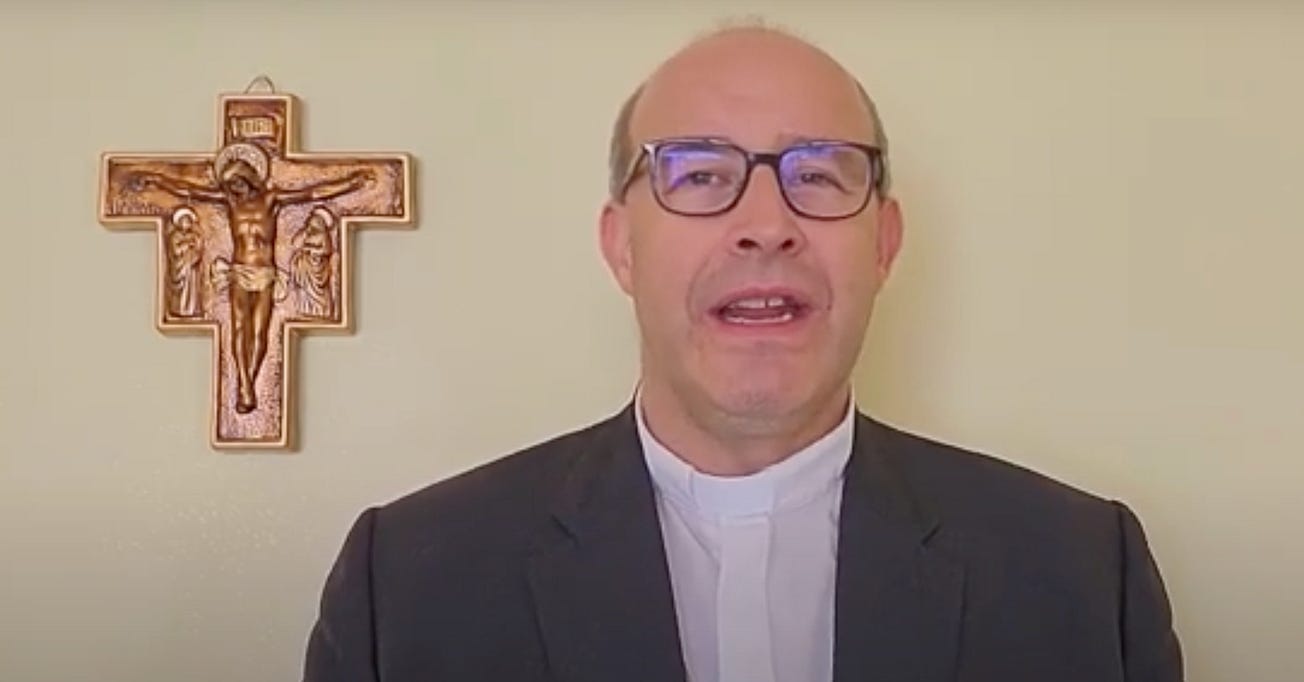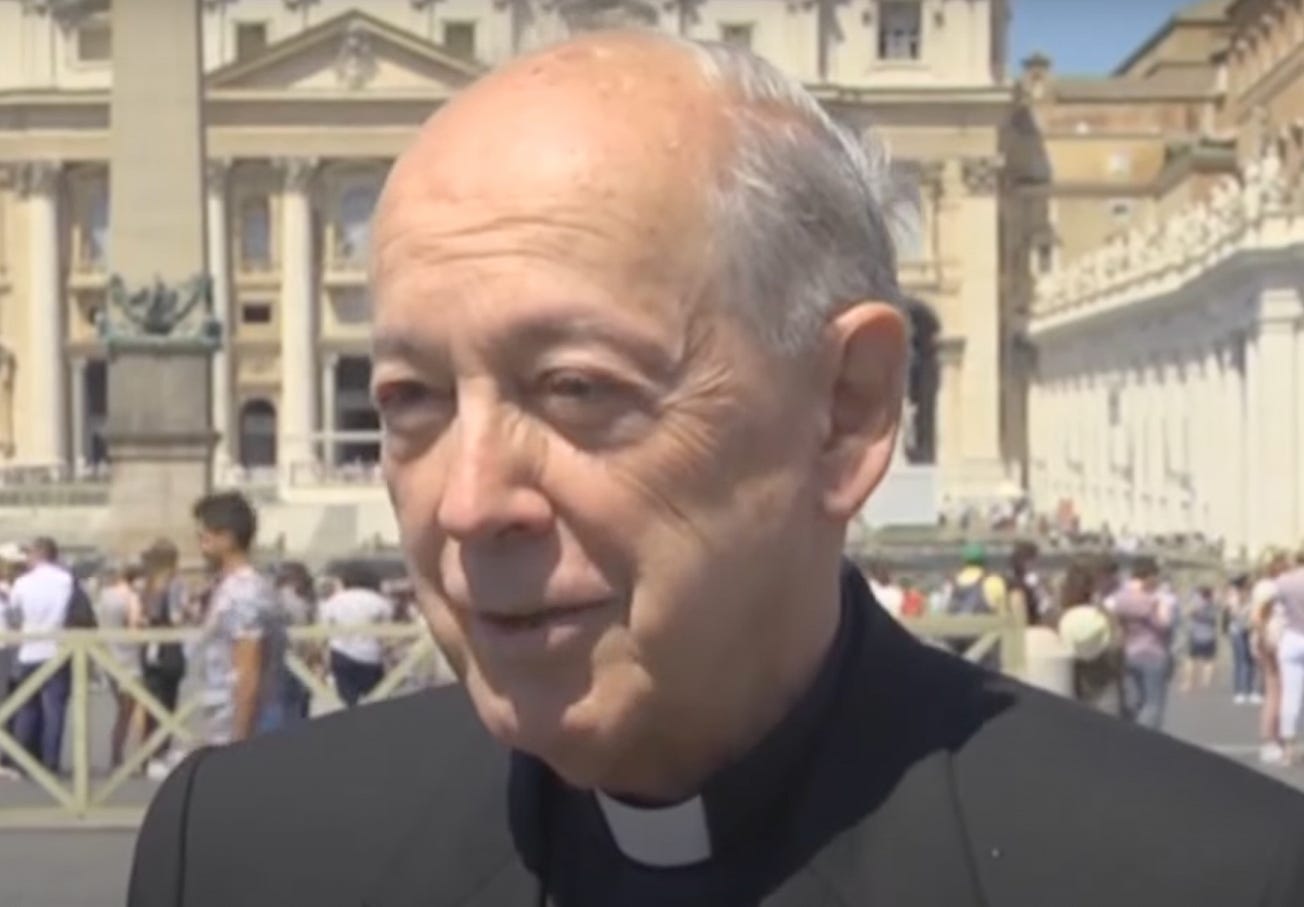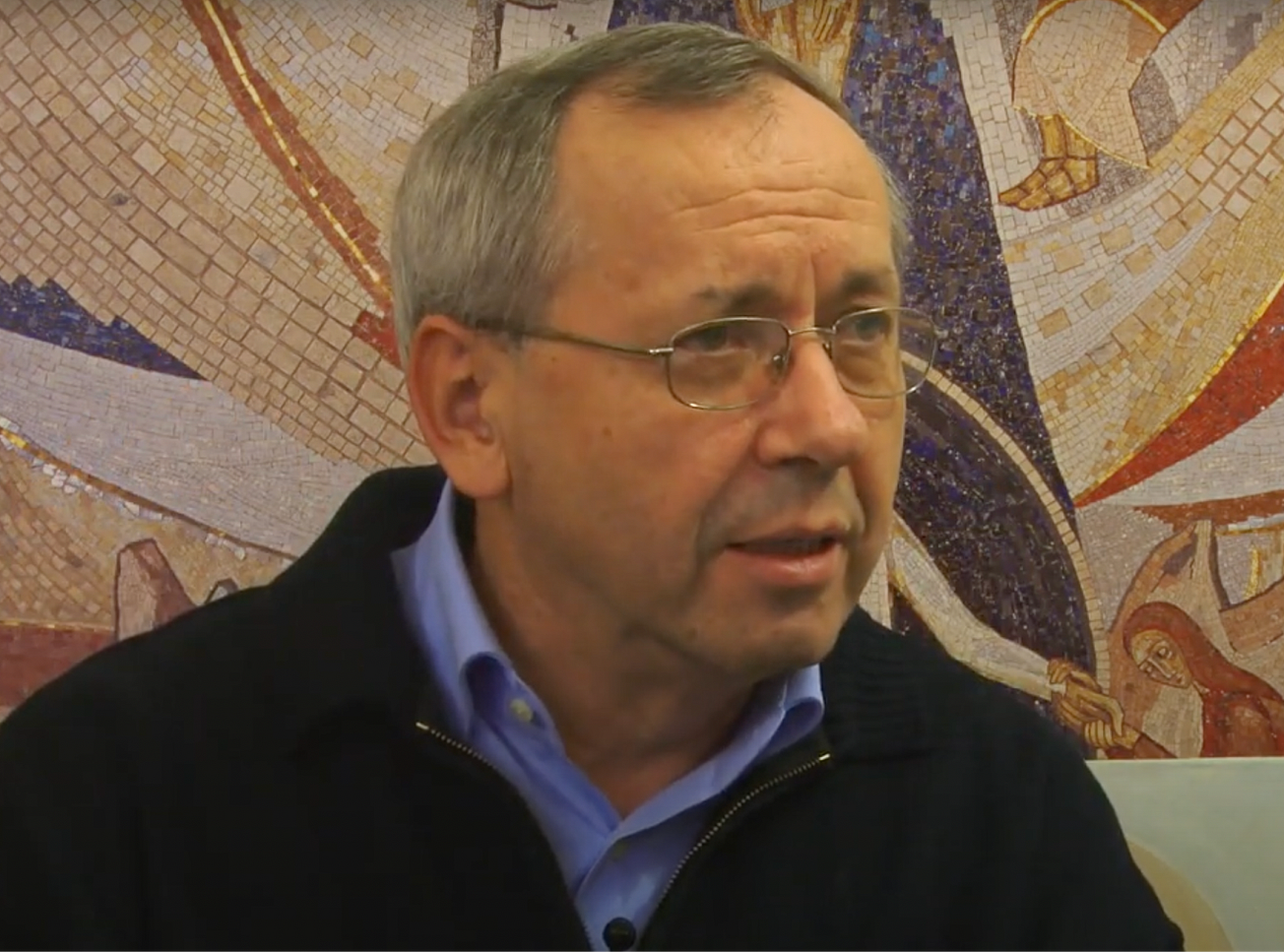When Archbishop Jose Gomez told bishops in March that the USCCB would develop a document addressing “Eucharistic coherence,” it fell to Fort Wayne-South Bend’s Bishop Kevin Rhoades to actually make that document happen.
Rhoades, who was chair of the USCCB’s doctrine committee until his term expired this week, was responsible for shepherding the bishops’ document from idea to reality — amid widespread controversy, a Vatican intervention, and global media attention.
The bishop spoke with The Pillar Nov. 18 about the project, the document, and the Holy Spirit.
This interview has been edited for length and clarity.
Bishop Rhoades, so much of the coverage about this document has been about “Eucharistic coherence.” I want to talk about that, but I don’t want to miss the forest for the trees.
In the big picture, what are the principles and thematic elements of “The Mystery of the Eucharist in the Life of the Church?”
And why is this important right now?
Well, we know there has been an increase of the religious ‘nones,’ the unaffiliated, and we know the decrease in Sunday Mass attendance — it is an urgent matter that we have a true revival of faith.
And what better way than centering the revival on the greatest sacrament, which is the sacrament of love? The Eucharist gets to the very heart of our faith, our redemption. The document brings that forth.
God’s love is revealed in Christ, and seen most vividly in the crucifixion. And that’s why the emphasis on the Eucharist as sacrifice is really important — because we’re talking about this amazing gift of self-giving love by the Son of God, made man.
So the incarnation, our redemption — all of that is in the document. I mean, it gets to the fundamentals of our faith, and our need for redemption.
The Eucharist makes present that great act of divine love. I think a revival of the faith, through a Eucharistic revival, is a great need, and I think that’s why there is a lot of excitement about the Eucharistic revival.
It sounds like you see the document as directly connected to the USCCB’s Eucharistic revival project and the Eucharistic Congress planned for 2024. Is that right?
Yeah. Because I think it is important to have this catechetical foundation for the revival.
We need to touch the hearts of people, you know, and I think the actual experience of the Eucharist — the beautiful celebration of the Mass, beauty in the liturgy, good homilies — that’s what touches people’s hearts.
The document tries to make clear how this relates to the way we we live. The Eucharist nourishes our Christian life, the body and blood of Christ strengthens us to live as disciples in the world.
There are social implications of the Eucharist...we have a whole section [in the document] that treats this. We become almost like Pharisees if we separate our worship from our life. Our faith has to be lived with the help of God’s grace, so that we strive to imitate Christ in his self-giving love.
On the Eucharistic revival, some bishops have emphasized the centrality of understanding the Eucharist in the context of the Mass. Others have emphasized the connection between the Eucharist and charity.
Does the document address those issues?
Yes. I think the document actually explains how it’s the Eucharistic sacrifice, the Mass, that’s the “source and summit of the Christian life” — the event of the Mass itself.
Eucharistic adoration needs to be tied to the Mass. Christ’s presence endures, and we pray before our Lord in the Blessed Sacrament, and that’s a beautiful and important spiritual devotion. But we never should see that in any way as separate from the Eucharistic sacrifice. And I think we explain that well in the document.
And then the Eucharist as the sacrament of charity, I think, is quite prominent in the document. We talk about the social implications; that the Eucharist commits us to the poor, for example.
Bishop Rhoades, I have been confused about the origins of the document. It seems the first time this document was talked about in public, it came in response to a USCCB working group focused on the Biden presidency.
But since then, the bishops have said the document was part of the USCCB’s strategic plan. And so that doesn’t quite make sense to me. Can you explain the timeline?
Well, before we were asked to do a document on Eucharistic coherence, the doctrine committee had in mind that we would do something, some kind of document, as part of the USCCB’s strategic plan.
You see, from the time the strategic plan was decided on, we were hoping to do something — as the committee on doctrine — to contribute. And one thing would be a catechetical or teaching document on the Eucharist. Because the strategic plan includes plans for the Eucharistic Congress, and it talks about the need for catechetical resources.
We never really got going with that, when all of a sudden the idea was presented that we should do something on Eucharistic coherence.
But in the committee, we were of the mind that Eucharistic coherence would be part of a broader document, because of the need to teach about the real presence of Christ in the Eucharist, the reality of the Holy Eucharist.
From the beginning, the idea of the document generated a lot of controversy, even among bishops. Were you surprised by that pushback?
Yes, I was. Because I think the narrative got away from us — the doctrine committee. There were a lot of public statements which went into the disagreement about canon 915, and the application of canon 915, and so that took center stage in the public discussion.
I mean the idea of [a document] really only became known publicly when it was spoken of in reference to Eucharistic coherence.
But what we were talking about in the doctrine committee before that, in a preliminary way, was a document on the mystery of the Eucharist addressing the challenges of faith. And so that’s how I saw things.
Committees are supposed to discuss how they can contribute to the strategic plan. So we started talking about a document or catechetical resources or whatever; that would be our path as a doctrine committee. And at that point, I think the Pew survey had come out, because we were talking about the fact that it was troubling if people were only seeing the Eucharist as a symbol. But that part of the discussion had not really been public.
We had not even brought a proposal to the administrative or the USCCB; this was a preliminary discussion we were having about how we could contribute to the strategic plan. And then before we got anywhere with that, the focus became Eucharistic consistency, and then there was a lot of public discussion.
In the end, we accepted that, but within a larger treatment of the Eucharist. And so I think when the public discussion became, you know, mostly on canon 915, we had to really refocus our work on the original intention of our committee, which was to do something much broader.
Let’s talk about canon 915. After the document was approved this week, there were some people who said the bishops had not said enough about pro-abortion politicians and Holy Communion, or had backed down on addressing “Eucharistic coherence” at all.
Does the document addresses Eucharistic coherence?
Yes. In the part where we talk about our response to the gift of the Eucharist, we talk about a worthy reception of the Eucharist, and we actually do talk about canon 915 and canon 916.
In terms of the the theological background or the doctrinal background, I think the best explanation really is from John Paul II’s encyclical on the Eucharist, and a distinction he talked about — the importance of both invisible and visible communion [with the Church].
Really the background in my mind for canon 915, which is, of course, the one that generated the debate, is the importance of visible communion with the Church.
We can’t judge the conscience of another person, we can't judge their subjective state. That, of course, is invisible communion. That’s canon 916. But then there is the importance of being in communion with the Church’s profession of faith, and that’s when we get to visible communion.
Our document, using Pope John Paul II, gives the doctrinal foundation for the discipline of canon 915. So I don’t think we skirted the issue. We went directly to why the Church has taught this.
There is a perception that when bishops judge whether someone can receive the Eucharist, they’re doing something unique to that sacrament. Does the Church make judgments about the suitable reception of other sacraments?
Yes. I mean, when you look at the sacrament of penance, a person there needs to have contrition [to be absolved].
And we speak of the sacraments as sacraments of faith, so faith is essential. And I think in the Eucharist, which is the source and summit, that’s certainly true.
Even when we receive a person into full communion with the Catholic Church who was baptized in another Christian community, they make the profession of faith before they receive their first holy Communion and confirmation.
The Church has a role in discernment of these things. Even in preparation for the sacraments of marriage or holy orders, there is a discernment by the Church as well as the individual.
Bishop Rhoades, in June there were three hours of debate over this document. And 55 bishops voted against even drafting a text at all. But this week there was almost unanimity — only eight bishops voted against the final document.
What happened over these past few months? What changed? What were the steps you took to move this document forward?
I really attribute the unity we had to the Holy Spirit. Because I really think it was the fruit of prayer and listening.
It was kind of a mini-synod process, there was a lot of prayer and there was a lot of listening, and I think the Holy Spirit was at work.
Practically though —
Really, I think it was the prayer. I see God’s grace at work. I really can’t explain it.
I think there was listening. I think on Monday morning that we began our assembly with adoration, and that is unusual — well, we’re going to be doing that, I think, from now on.
We would often have something like that at the end of our meetings, like maybe a half day of prayer, but I think we should always do it at the beginning, so that from the beginning it becomes a process of asking the Holy Spirit’s guidance.
And before the meeting? There were regional meetings of bishops who sent you feedback. How did that work?
They were working from an outline. The doctrine committee sent an outline, and they talked about it and sent feedback.
I think this process was really very good, because even while it was a lot of work for us, because we received a lot of summary comments from the region, it showed me that this was important [to the bishops].
The bishops were very vocal in the regional meeting. And in a very good way, that showed that this was very important to the bishops — we all believe the Eucharist is so important, and so we wanted to get this right, and there was a lot of engagement.
Now putting it all together, that was a lot of work. And the USCCB staff worked really hard, the members of the committee and our consultants were very good.
We couldn’t, obviously, treat everything. We tried to treat the things that surfaced the most. And in that way, it was a very collegial process.
Is this a potential model for the way that documents can be developed at the conference in the future?
I think it is very good for bishops to have a way to provide input early on. And I think that should be a normal part of the process. Apart from the public disagreement that took place early on, I think the rest of the way, the process unfolded very well. The regional approach worked very, very well.
Your process seems to ensure that the document, in a certain way, is bishop-driven, instead of reflecting the view of an expert or a staff member brought on to write it.
Yes. And it’s a teaching document, and that’s our vocation. That’s part of our teaching office, our charism, as bishops.
Shortly before the document was discussed this month, Vatican News published an interview with Cardinal Roger Mahony, the emeritus archbishop of Los Angeles. Cardinal Mahony was very critical of the document. And he also praised a statement from some Catholic lawmakers who are at odds with Catholic doctrine on abortion.
What was your reaction to the cardinal’s remark on those things?
I very much disagree with that. I was saddened to read that because it’s just not consistent for a Catholic to be supporting legalized abortion or funding of abortion. It’s not consistent with one’s faith.
So I think the call to conversion is what we need to do. I don’t condemn those 60 [lawmakers], I don’t condemn anyone, but what they’re doing is inconsistent with the faith that they profess.
As a diocesan bishop, how do you plan to make use of the new Eucharistic document in the Diocese of Fort Wayne-South Bend?
It'll definitely be part of the revival; we're already working on activities for the revival.
And now with the document, I would like to have it used in education. I'm going to ask our high school teachers to adapt it for their classes, especially the required high school course on the sacraments.
I am also chair of the board of Our Sunday Visitor, so I am looking forward to OSV producing materials that will incorporate elements of the document into catechetical materials.
I'll be preaching as bishop using things from the document; I would want our priests to preach from it as well. I will be sending the document to all my priests, encouraging them to use it in their homily preparations, as there will be particular times where the readings will lend themselves to incorporating some of what’s in the document into homilies.
So I think there's a lot of creative ways to incorporate it.
There are a lot of people, though, who say that the USCCB makes documents and those documents just go onto the shelf. Is all the work that goes into something like this a good use of time for bishops?
If this wasn’t part of the broader Eucharistic revival, this would be difficult. To have a document, but not have an emphasis on the document’s contents after publication — that happens sometimes.
But in this situation, it’s built into the revival that the content itself can be helpful for this mission. For the Church and for people to really grow in faith. That’s what I’m hoping will come next.




